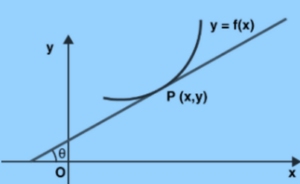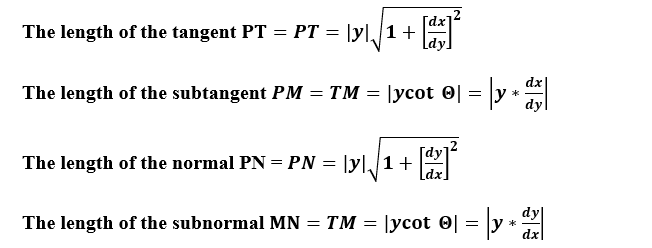Table of Contents
The tangent line (or merely tangent) to a plane curve at a given point in geometry is indeed the straight line that “barely touches” the curve at that point and it was described by Leibniz as the line connecting two infinitely close points on a curve. A straight line is said to be a tangent of a curve y = f(x) at a point x = c if it passes through (c, f(c)) on the curve and it does have a slope f'(c), where f’ is the derivative of f. Space curves, as well as n-dimensional Euclidean space curves, are defined similarly.
The tangent line has been “going in the same direction” as the curve as it passes through the point where the tangent line and the curve meet, known as the point of tangency, and is thus the best straight-line approximation to the curve at that point. The tangent line toward a point on a differentiable curve is also known as a tangent line approximation because it is the graph of the affine function that best approximates the original function at the given point.
Correspondingly, the tangent plane to a surface is the plane that “just touches” the surface at a given point. Tangent space is really a generalisation of the concept of a tangent, which is one of the most fundamental notions in differential geometry.
Subtangent and Subnormal
The subtangent and associated words in geometry refer to line segments defined by the line tangent to a curve at a given point and the coordinate axes. The words are somewhat archaic today, but they were widely used until the early twentieth century.

Let P = (x, y) portray a point on a given curve, and A = (x, 0) depict its projection onto the x-axis. Sketch the tangent to the curve at P, and let T be the point where it intersects the x-axis. The subtangent at P would then be defined as TA. Likewise, AN is called the subnormal if the normal to the curve at P intersects the x-axis at N. The lengths PT and PN are referred to as the tangent and normal in this context, not the tangent line and the normal line, which are also referred to as the tangent and normal.
Subtangent And Subnormal Formulae

FAQs
Q. Determine the equation of the tangent to the curve y = be[−x/a] at the point where it crosses the y-axis.
Ans: We have, y = be[−x/a] meets the y-axis at (0, b).
And, y = be[−x/a] (−1 / a)
Now, at (0, b), dy / dx = be0 (−1 / a) = −b / a
Thus, the required tangent is y − b = −b / a (x−0) or x / a + y / b = 1
Q. x + 4y = 14 is normal to the curve y2 = ax3 − β at (2, 3). Determine the value of α+β.
Ans: We have, y2 = ax3 − β
That is, dy / dx = 3αx2 / 2y
Thus, slope of the normal at (2, 3) is (−dx / dy) (2,3) = −2 × 3 / 3α (2)2 = −12α = −14 Or α = 2. It is known, (2, 3) lies on the curve.
Hence, 9 = 8α − β or β = 16 − 9 = 7
That is, α+β = 9






